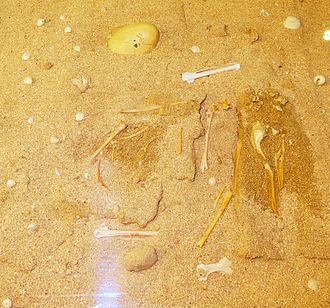Discover Your Roots
SIGN UPDiscover Your Roots
SIGN UPThe name "Dune" is of French origin and is primarily gender-neutral. It means "A Sand Landform." A dune is a landform typically composed of wind- or water-driven sand, often taking the form of mounds, ridges, or hills. They are most commonly found in desert environments, where the lack of moisture hinders the growth of vegetation that would otherwise interfere with the development of dunes. However, sand deposits are not restricted to deserts, and dunes can also be found along sea shores, along streams in semiarid climates, and in other areas with poorly cemented sandstone bedrock. Coastal areas with dunes are important in protecting the land against potential ravages by storm waves from the sea. The modern word "dune" came into English from French around 1790, which in turn came from Middle Dutch "dūne."

The dune shearwater (Puffinus holeae), also known as the Canarian shearwater or Hole's shearwater, was a relatively large shearwater species that once inhabited the Canary Islands archipelago in the North Atlantic Ocean. Fossil evidence suggests its presence in the Figueira Brava cave archaeological site on the western coast of Portugal. The specific epithet "holeae" pays tribute to Mrs. Jean Hole, who gathered fossil material of the species on the Jandia Peninsula of Fuerteventura. Intermediary in size between the Manx and Cory's shearwaters, the dune shearwater nested in dune fields, unlike the smaller and sympatric lava shearwater, which inhabited lava fields. Unfortunately, the species became extinct about 2000–3000 years ago, coinciding with the initial human settlement of the islands by the Guanches, likely due to human predation. This extinction serves as a sobering reminder of the impact of human activity on the natural world.




All images displayed on this page are sourced from Wikipedia or Wikimedia Commons.We use these images under their respective Creative Commons or public domain licenses. Wherever applicable, author attributions and license information are provided. If you believe an image is used incorrectly or outside its license terms, please contact us so that we can review and correct the issue.